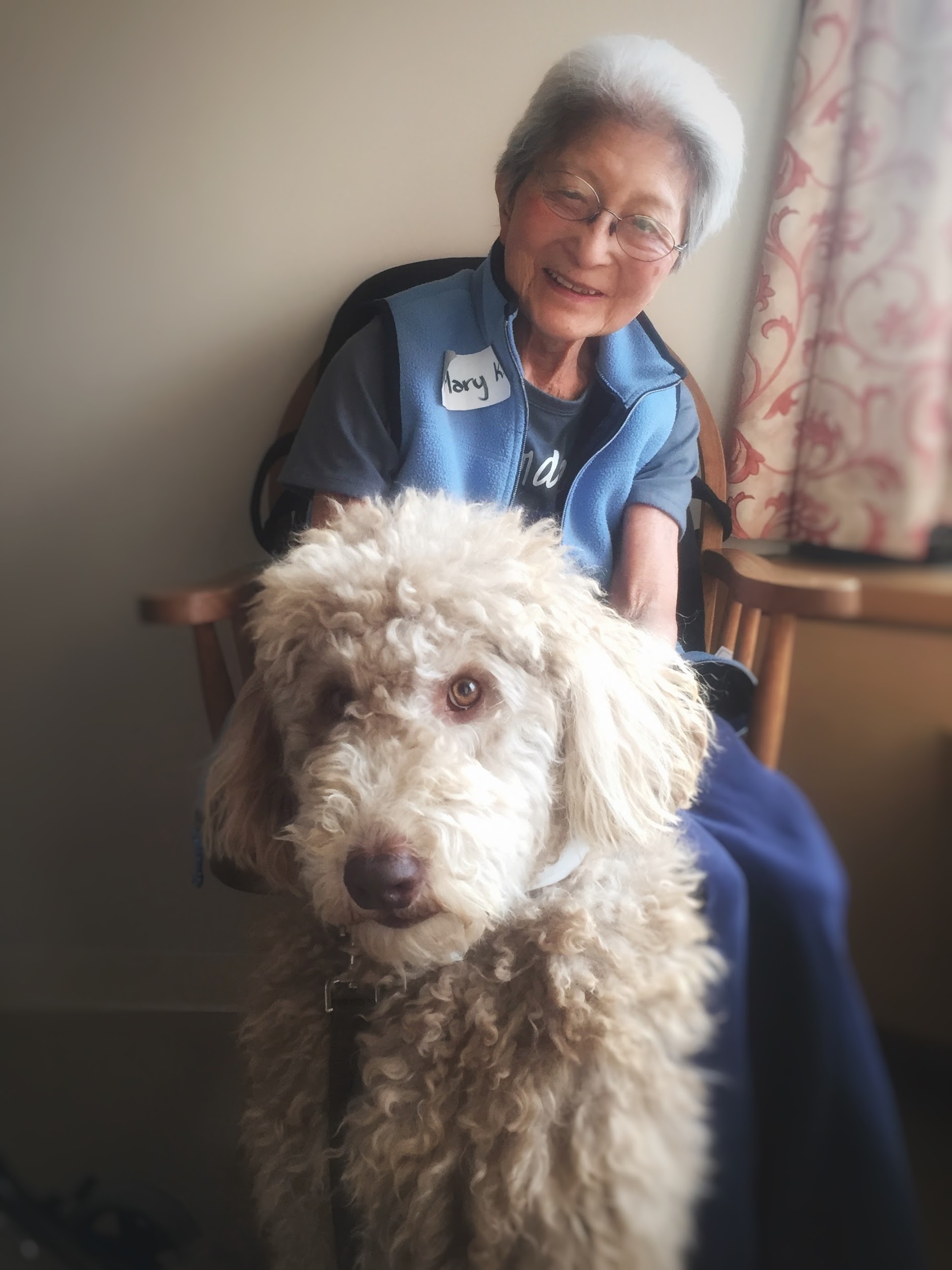LIFE LESSONS from Mary Shinko Kato (Nagata)
Meaghan Tanaka
Once a week I visit a long-term care facility with my dog, Samson, as part of the St. John Ambulance Therapy Dog program. Samson loves the attention he receives, but even he senses the sadness and loneliness felt by many of the residents. The visits can be emotionally draining for both us, but they can also be heart-warming, enlightening, and inspiring when strangers we visit become friends, and friends become family. Shinko Mary Kato is one of the strangers who have become family.

I was drawn to Mary because of her Japanese heritage and the parallels I saw between her and my Nisei grandparents. She was born Shinko Mary Nagata in 1922 in Vancouver, British Columbia. Her mother, Naka, kept Mary and her six siblings corralled in the front yard of 2330 Wall Street in the east end of Vancouver near the Burard Inlet. She taught them the Japanese language, cooking, and customs, but she also emphasized understanding the customs of their Caucasian neighbours. Mary’s father, Shichitaro worked for the Japanese-owned Queen Charlotte Timber Holding Company. It was because of his job that on the night of Japan’s attack on Pearl Harbor, two RCMP officers came to the Nagata home and arrested him as an “enemy alien”. Mary and her younger sister, Ruth Fusako were forced to leave the University of British Columbia (UBC). The family was forced to leave their home, their pet dog, and canary.
Mary’s life is surprisingly well documented. The letters that Mary and her family wrote to government officials during the time of Shichitaro’s imprisonment are the focus of the Landscapes of Injustice research paper “Our Appreciation for All Your Goodness and Kindness”: Power, Rhetoric, and Property Relations in the Dispossession of Japanese Canadians. In 2012, Mary and her sister, Ruth Fusako received two of the 76 honorary degrees given by UBC to the Nikkei students forced to leave the university in 1942. Her story is highlighted in both the commemorative yearbook RETURN, and the documentary, A Degree of Injustice that were produced for the event. Mary is the focus of almost every article written about the honorary convocation. She is described as the individual who “exemplified the moment”.
Mary does not seek the limelight, but it is not chance that has resulted in her story being documented by so many writers and film-makers; it is Mary’s exuberance, her insight and her beautiful perspective on life. Watch one of the interviews with Mary kept in the UBC Library and Archives and you will see why she has inspired so many people.
Many of the people I visit in long-term care facilities are depressed. They complain to me about the staff and the food. Mary tells me how innovative she thinks members of the staff are by helping her to make peanut butter cookies and using the activity of kneading the dough to exercise her arthritic hands. Other residents I visit tell me about how much they miss their homes, having a pet, doing the things they used to love to do with the people they loved so much who are now gone. Mary tells me about what she misses too: her home of over 70 years, her beloved husband and dog who have both passed away, her son and daughter who live several hours away from Toronto, and her beautiful granddaughter who has moved to Hong Kong. She tells me about how she misses celebrating the New Year at home with all of her family, but unlike the other residents she focuses on the positive. She tells me how devoted her daughter who lives in Toronto is, how her other grandchildren visit whenever they have breaks from university, how her sister and brother bring celebrations to her, and how much my dog Samson and I mean to her. She has been injured by bad falls recently, but she downplays them; she is too busy worrying about how my baby and I are doing.
The first thing she explained when I met her was the reason that so many people struggle with aging. When you are young you expect everything to be done on your terms. As you age you become more dependent on others and you have to understand that things have to be done on other people’s terms. She told me, “Patience. You have to learn patience.” When she talks about her childhood in Vancouver her eyes well up with tears. They are tears of joy when she talks about her family, but they become tears of hurt when she remembers elementary school. She was mocked for her Japanese name and dress. She was never picked for the skipping game ‘Farmer in the Dell’ and not allowed to play hopscotch. Ninety years later it still pains her to remember, but she tells me it is why she is interested in understanding others.
When I ask Mary the secret to happiness, she replies, “Looking for nice things every day; and looking forward to tomorrow and the happy surprises it might bring — like you visiting!” At this point my eyes well up with tears. Every time I see her I tell her that my life is better because I have her in it.
Mary is looking forward to turning 96 years old on March 10 and I hope to celebrate it with her.


